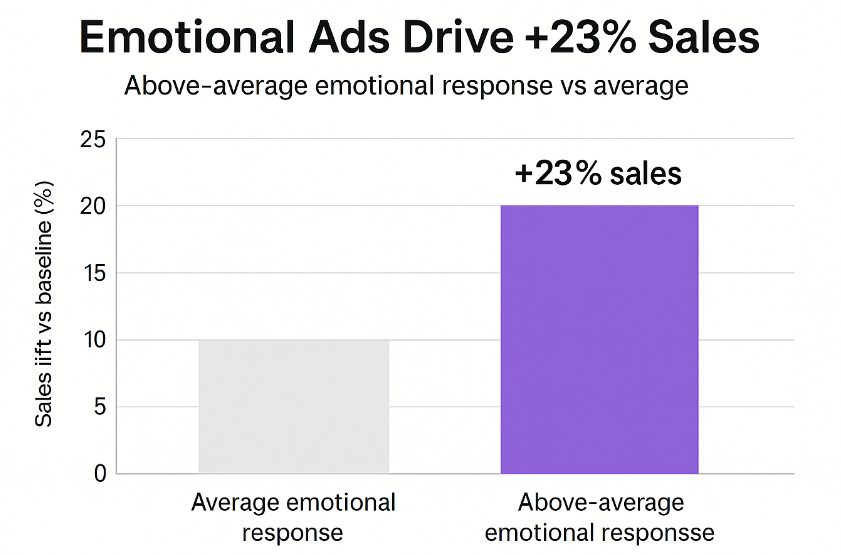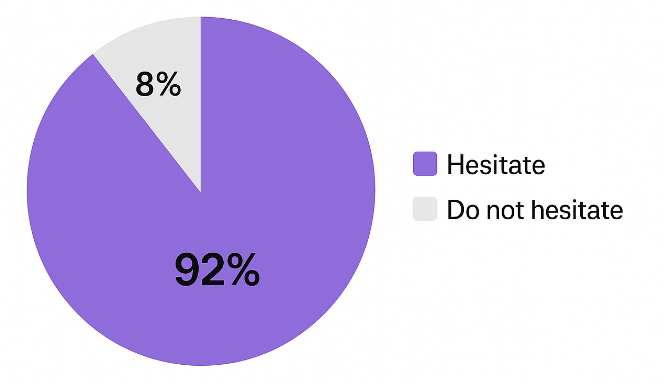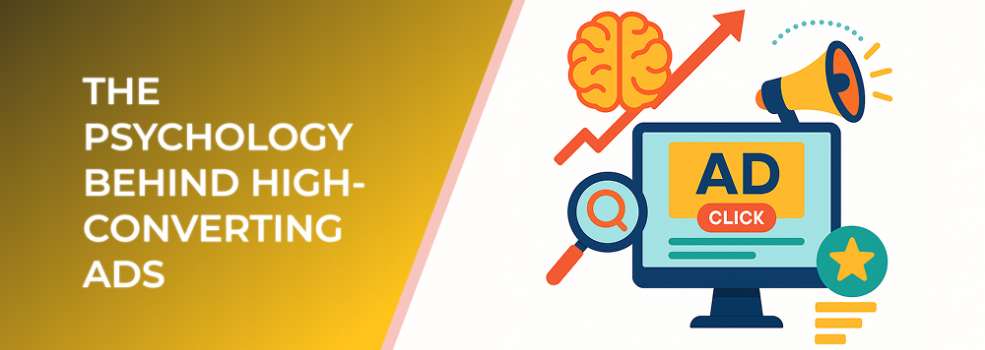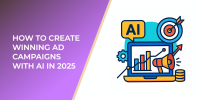Behind every click, share, or purchase lies a psychological trigger. High-performing ads don’t just sell products; they appeal to emotions, instincts, and subconscious desires. To create ads that convert, it’s essential to understand how people think and what drives their decisions.
1. The Power of Emotion
Emotions drive up to 80% of consumer decisions, according to research by the Journal of Advertising Research. People may justify purchases logically, but most buying behavior starts with feelings—excitement, fear of missing out, trust, or belonging. Ads that tap into these emotional triggers often outperform purely informational campaigns.

Ads that trigger stronger emotional responses can drive roughly 23% higher sales compared to average emotional ads
Example: A campaign highlighting a sense of community or achievement can significantly increase engagement rates. In fact, emotional ads are twice as likely to be shared compared to rational ones.
2. The Principle of Social Proof

Nearly 9 in 10 consumers hesitate to make a purchase when no customer reviews are available
People trust what others already trust. This phenomenon, known as social proof, plays a key role in online advertising. Statistics show that 92% of consumers trust recommendations from peers and influencers, even if they don’t know them personally. Featuring testimonials, reviews, or case studies can build credibility and lower hesitation to purchase.
3. The Role of Cognitive Ease
When ads are simple, visually clean, and easy to understand, the brain perceives them as more credible. This is called cognitive ease. Studies indicate that ads with clear visual hierarchy and minimal clutter can increase conversion rates by up to 35%. Simplicity helps the message stick—and that’s where design psychology meets marketing strategy.
4. The Scarcity Effect
Scarcity creates urgency. When something appears limited—whether it’s time, availability, or exclusivity—it triggers a psychological response known as loss aversion. According to a recent behavioral economics study, scarcity cues can increase purchase intent by up to 226%. Words like “Limited offer” or “Only 3 spots left” push audiences to act fast.
5. The Reciprocity Principle
When people receive something valuable for free, they feel compelled to return the favor. This principle—known as reciprocity —is why free guides, samples, or educational content are so effective in lead generation. Offering genuine value before asking for a sale builds trust and long-term loyalty.
Turning Psychology into Performance
Understanding these psychological drivers transforms ads from generic to compelling. The best-performing campaigns blend emotional storytelling, trust signals, clarity, urgency, and value—all grounded in human behavior. When psychology meets strategy, conversions naturally follow.
Further Reading:
If you found this article useful, explore these related topics:

